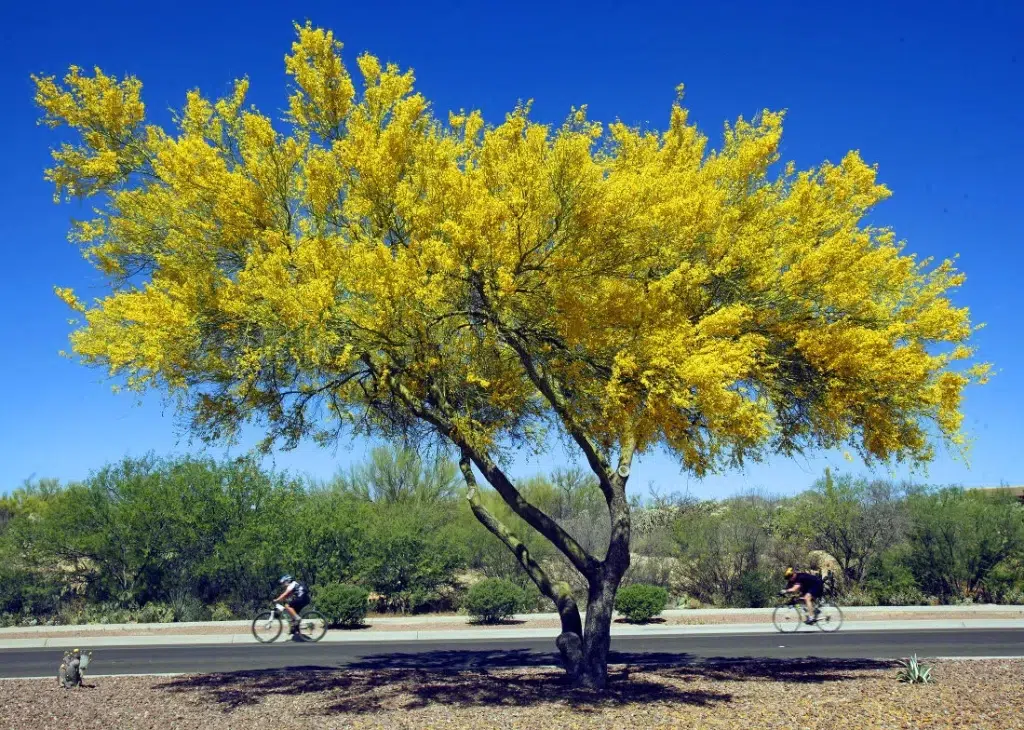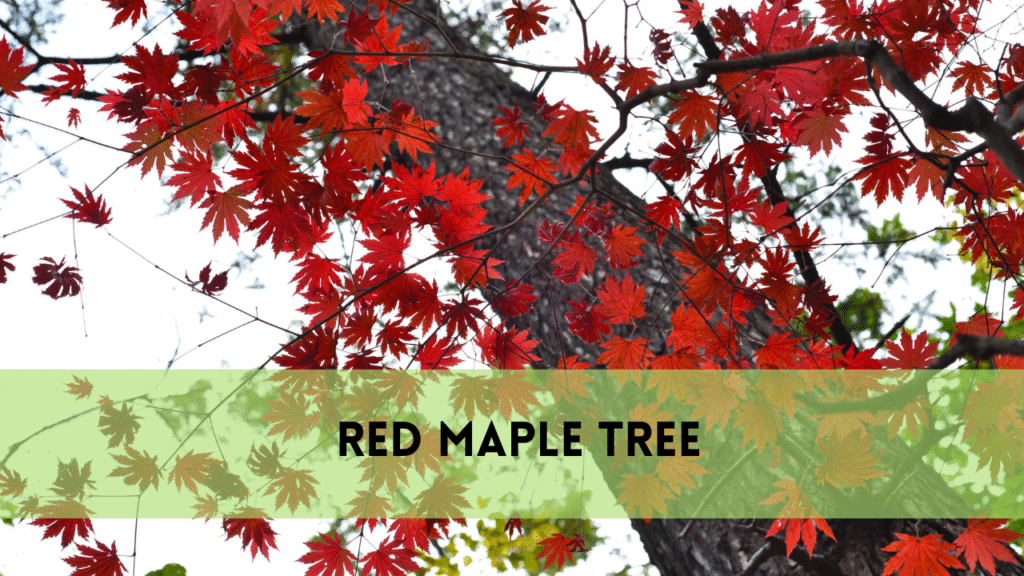How to trim Palo verde tree?
Palo Verde trees are a common sight in arid climates, recognized for their brilliant green bark and yellow blossoms. These trees are not only visually appealing, but they also serve an important purpose in the environment. Proper maintenance, such as trimming or pruning, is required to keep your Palo Verde tree healthy and growing. In this comprehensive guide, magnolia tree removal will lead you through how to trim a Palo Verde tree.
Palo verde tree
Palo Verde trees are unusual desert plants with green bark and bright yellow blossoms. These trees are native to the southwestern United States and Mexico, where they thrive in arid circumstances. Even during droughts when leaves are shed, their green bark facilitates photosynthesis. Palo Verdes are a vital species in desert environments, providing food and shelter for various creatures. There are two primary types: Blue Palo Verde (Parkinsonia florida) and Foothill Palo Verde (Parkinsonia microphylla), which are both known for their tenacity and beauty. Landscapers commonly use these trees for their drought resistance and beauty.
Understanding The Importance of Trimming
Trimming a Palo Verde tree is necessary for a variety of reasons. It is helpful in:
Preventing Damage: Removing dead or diseased branches helps to keep trees healthy by preventing decay from spreading.
Enhancing Aesthetics: Proper pruning shapes the tree, bringing out its innate beauty.
Cutting back overgrown branches promotes new development.
Safety: Removing dangerous branches avoids potential harm or injury.
When should I trim a Palo Verde tree?
Timing is everything when it comes to cutting Palo Verde trees. The optimal time to prune is during the dormant season, which usually occurs in late winter or early spring. This scheduling helps to minimise sap loss and lowers the likelihood of pest infestations. Avoid cutting during the hot summer months, as it may stress the tree and cause sunburn on exposed limbs.
Tools you’ll need
Before you begin pruning, grab the following tools:
Pruning shears are used to cut smaller branches.
Loppers are ideal for medium-sized branches.
Pruning Saw: For branches that are larger and thicker.
Protective gear includes gloves, safety glasses, and long sleeves to keep you safe from thorns and debris.
Disinfectant is used to clean instruments and prevent disease spread.
How to Trim Palo Verde Tree?
Here’s the step-by-step guide on how to trim a palo verde tree
Inspect the tree
Start by properly checking the Palo Verde tree. Look for dead, diseased, or damaged branches, which are usually dry and brittle. Identify branches that intersect or rub against one another and overgrown or dangerous branches. This preliminary inspection aids in determining which branches require pruning to maintain the tree’s health and structure.
Prepare your trimmings
Create a clear plan before you start cutting. Prioritise eliminating dead, diseased, or damaged branches. Aim to form the tree so that it looks balanced and natural. To avoid stress and promote healthy growth, don’t remove more than 25–30% of the tree’s foliage in one session.
Clean your tools
To prevent the spread of disease, disinfect your instruments before pruning. Use a household disinfectant or a solution of one part bleach and nine parts water. To keep the tree healthy, properly clean your instruments between cuts, especially if you’re working with sick wood.
Prune small and medium branches
For smaller branches, use pruning shears or loppers. Identify the branch collar, which is a swollen area where the branch meets the trunk. To facilitate a fast recovery, cleanly cut slightly outside the branch collar at a 45-degree angle. Ensure that the cuts are smooth to reduce the danger of sickness and injury.
Prune the larger branches
Use a pruning saw to cut larger branches. Start with an undercut 6–12 inches from the trunk to prevent bark tearing, To remove the branch, make a top cut just outside the undercut., finish by cutting the remaining stub slightly outside the branch collar to promote healing and prevent harm
Remove dead or diseased wood
To improve the health of the tree, carefully remove any dead or unhealthy branches. Cut huge branches into manageable sections to prevent damaging the bark. To prevent the sick wood from spreading to other parts of the tree or adjacent vegetation, dispose of it properly.
Shape the tree
To shape the tree, selectively remove overgrown regions. Concentrate on maintaining a balanced and natural appearance. Remove branches that disturb the tree’s symmetry, and open up the canopy to increase air circulation and light penetration, thereby improving overall tree health and vitality.
Clean up and dispose of debris
After trimming the tree, clean up the space around it. Collect all the branches, leaves, and other trash. Use a chipper to make mulch from larger branches or dispose of the material per local standards. To prevent disease from spreading to other plants in your garden, sanitize your instruments.
Post-trimming Care of Palo Verde Tree
After cutting, you must care for your Palo Verde tree to keep it healthy and thriving. Here are some important after-trimming care actions:
Watering
Water the tree thoroughly after pruning to help it recover from the stress. Palo Verde trees, like desert plants, do not require frequent watering, but a deep soak might help with the healing process. Make sure the soil is wet but not soggy.
Mulching
Apply mulch around the tree’s base. Mulch helps to retain moisture, regulate soil temperature, and control weeds. Spread organic mulch, such as wood chips or bark, uniformly to a depth of 2-3 inches. To prevent decay, keep the mulch away from the tree trunk.
Monitoring
Regularly check the tree for symptoms of stress or disease. Check for new growth, which shows that the tree is doing well. Look for any unexpected changes in the leaves or branches, such as browning, withering, or insect infestations. To avoid further damage, resolve any concerns as soon as possible.
Fertilizing
Avoid fertilizing immediately after cutting to prevent further stress on the tree. Before fertilizing, wait until the tree shows evidence of new growth. Use a balanced, slow-release fertilizer to provide the nutrients the tree needs without overwhelming it.
Pest Protection
Protect the tree from pests that could add to its stress. Inspect the tree regularly for evidence of pest activity, such as chewed leaves or damaged bark. If required, use pesticides or natural predators.
Regular Maintenance
To keep your Palo Verde tree healthy and attractive, take care of it regularly. Set up routine inspections and trimming sessions to remove dead or diseased wood and shape the tree as necessary. Consistent care will ensure tree thrives and remains a wonderful element in your landscape.
Related Posts:
FAQS
Can I prune a thorny Palo Verde tree?
You can safely prune thorny Palo Verde trees. To prevent thorns from scratching you during the trimming procedure, wear protective gear such as gloves and long sleeves.
If my Palo Verde tree has multiple trunks, what should I do?
When trimming a Palo Verde tree with many trunks, prune branches strategically from each trunk to maintain a balanced appearance. To avoid damaging the tree’s structure, do not chop too close to its major trunks.
Is there a special trimming approach for Palo Verde trees to promote more shade?
To increase shade from a Palo Verde tree, cut branches on the south and west sides to form a denser canopy. This helps to deflect sunlight during the hottest hours of the day and creates more shaded spaces underneath.
Can I compost clipped branches and leaves from my Palo Verde tree?
Yes, you can compost clipped Palo Verde branches and leaves. To speed decomposition, shred or chop the branches into tiny pieces. You can then use the nutrient-dense compost to supplement garden soil.
How can I deal with sticky sap or resin after cutting my Palo Verde tree?
If sap or resin from the Palo Verde tree gets on your tools or clothing, dissolve and remove it using a citrous-based cleanser or rubbing alcohol. To avoid residue buildup, properly clean trimming instruments after each use.
CONCLUSION
Knowing, How to Trim Palo Verde trees is an important part of their care to ensure their health, appearance, and safety. Following the FAQs and directions in this detailed guide will allow you to efficiently trim your Palo Verde tree to improve its beauty and durability. Remember to check the tree regularly, carefully plan your pruning strategy, use appropriate tools, and follow proper post-trimming maintenance. With these measures, your Palo Verde tree will grow into a lively focal point in your environment, providing shade, beauty, and ecological benefits for years.





